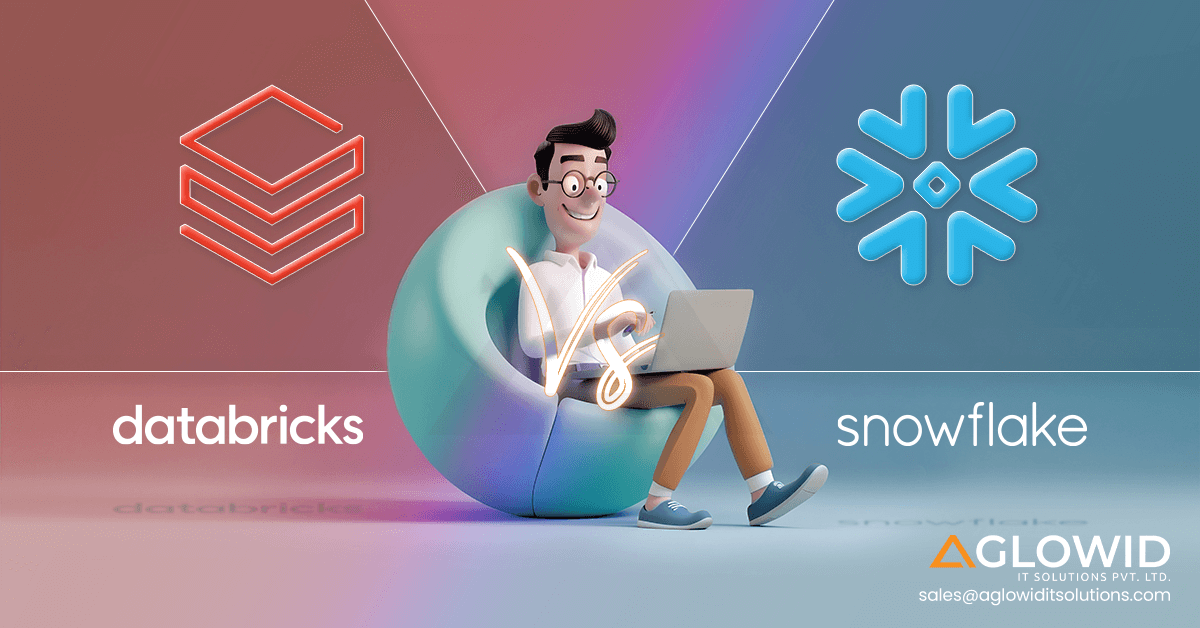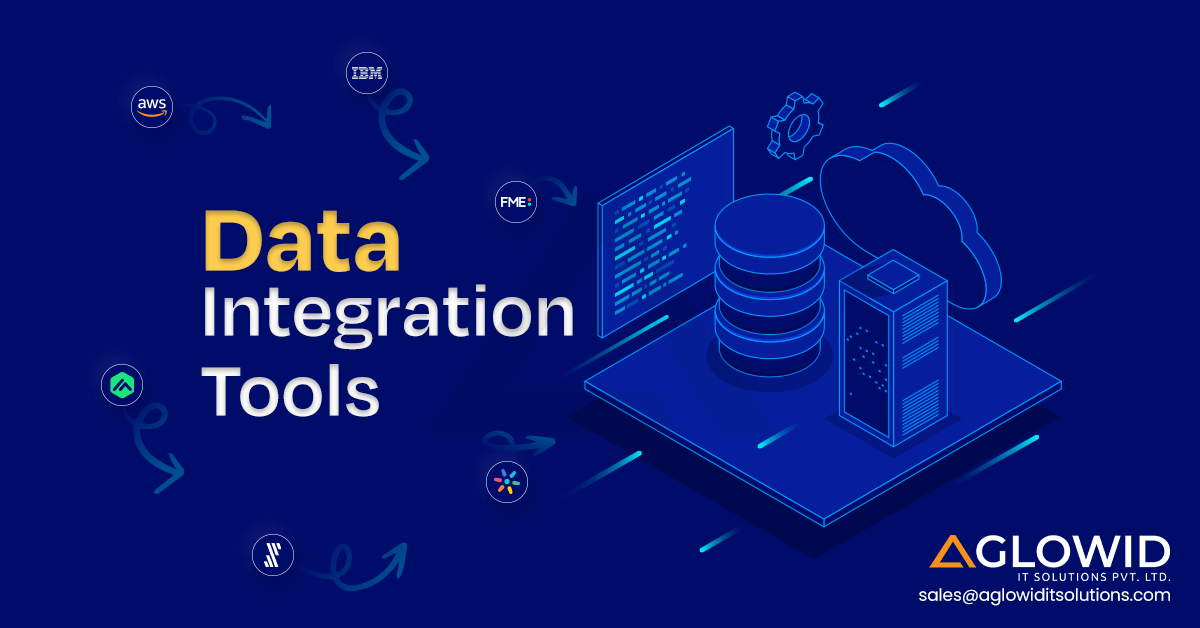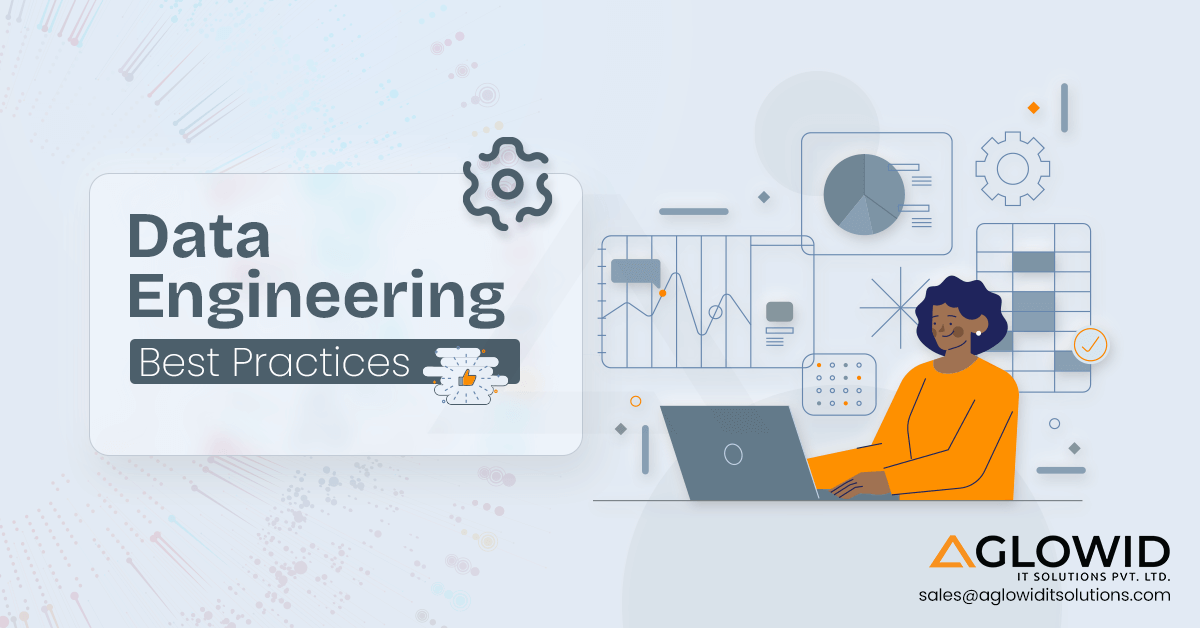Quick Summary:
Two big powerhouses stand out in cloud data systems: Databricks vs Snowflake. Both offer robust solutions, but which one aligns with for your specific requirements? Let’s explore the most important differences between Databricks and Snowflake to unlock the full potential of your data journey.
Choosing between Databricks and Snowflake is a crucial decision for organizations aiming to maximize their data’s potential. This choice impacts the efficiency, agility, and innovation of their data initiatives. Let’s explore these leading cloud data platforms to better understand their capabilities
Exploring Databricks and Snowflake: An Overview
Here is an overview of comparing Databricks and Snowflake, two prominent cloud data platforms:
What is Databricks?
Databricks is a unified analytics platform co-founded by the creators of Apache Spark.
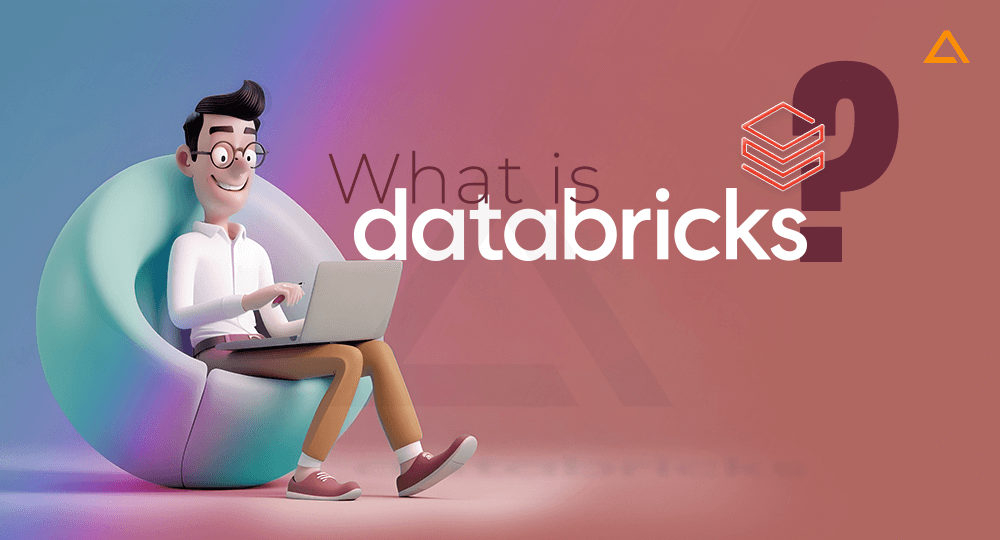
Databricks simplifies big data processing and analytics by offering collaborative tools for data scientists, engineers, and analysts. It supports data ingestion, transformation, exploratory analysis, and machine learning model development. Leveraging Apache Spark’s scalability, Databricks accelerates data-driven projects, helping organizations gain actionable insights and drive business innovation.
Features of Databricks
Databricks has rich feature sets that meet various data and analytics needs. Here the breakdown of some of the important features of data bricks.
- Unified data lake house: Integrates data storage and accounting on a single platform, allowing easy management of various types of data.
- Scalable Analytics: Uses Apache Spark to optimize performance on large datasets and complex analytics workloads.
- Machine Learning: Provides tools and frameworks to build, train and deploy machine learning models, enabling advanced analytics.
- Collaborative Environment: This environment provides a platform for teams to share notebooks, rules, and data and facilitates easy collaboration.
- Security: Provides robust security features such as role-based implementation and data encryption to ensure data protection.
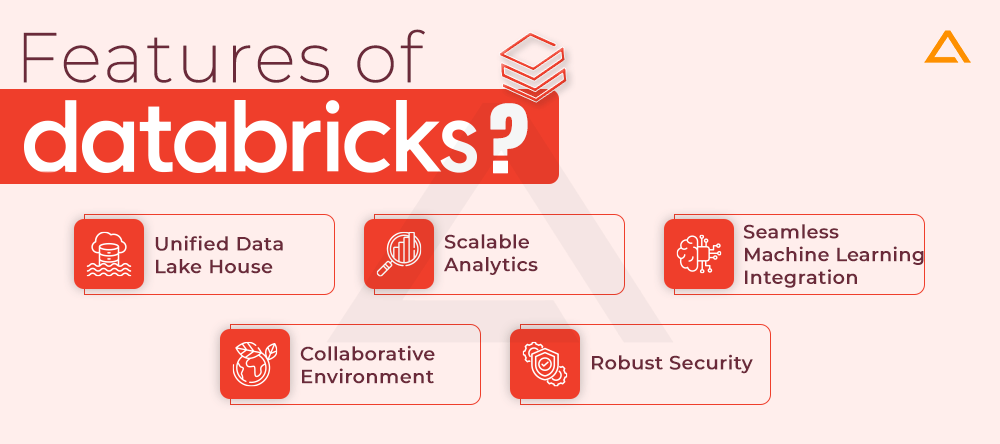
Databricks Use cases
Data Engineering:
- ETL Pipelines
- Data Lake Management
- Data Cleaning & Preprocessing
Data Science & Machine Learning:
- Model Building & Training
- Real-time Analytics
- Feature Engineering
Business Intelligence & Analytics:
- Interactive Data Exploration
- Advanced Analytics
- Data Visualization
Additional Use Cases:
- Cybersecurity
- Internet of Things (IoT)
- Genomics & Healthcare
What is Snowflake?
Snowflake is a cloud-based data platform which provides the services such as storing, integrating, analyzing and sharing the data across the different cloud environments. Snowflake offers a unique data warehousing solution which separates the computer resources from storage.
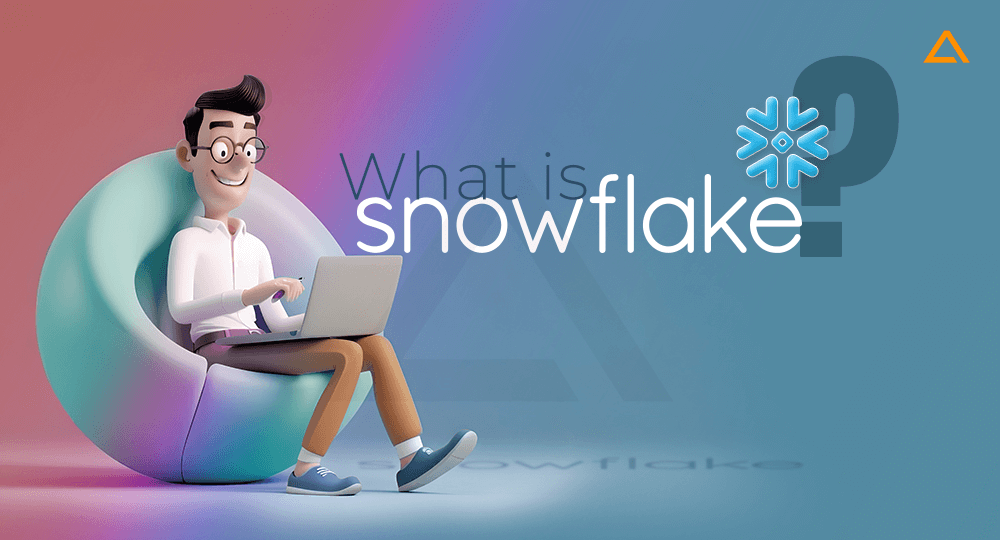
It allows the companies to scale the computing power as required without managing the infrastructure. Snowflake’s platform is designed to handle structured and semi-structured data, support standard SQL queries. It provides features like data cloning and concurrent scaling.
Features of Snowflake
- Storage and compute partitioning: This unique design allows independent scaling of storage and compute resources. You can freely create estimates based on the amount of work required, optimize cost and performance, and scale based on the amount of data required.
- Automatic scaling: Snowflake automatically scales compute resources up or down based on workload, ensuring efficiency without manual intervention. This eliminates the need for oversupply and reduces unnecessary costs.
- Secure data sharing: Snowflake provides granular access control features, allowing data to be shared securely with specific users or groups within an organization. This ensures data privacy & compliance with security regulations.
- Support for semi-structured data: Snowflake natively supports semi-structured data such as JSON, Avro, and XML. This allows various data types to be stored and analyzed without the need for complex data transformations.
- Enabling Screenshots: This unique feature allows you to access historical versions of your data at any time, enabling data recovery, statistical capabilities, and historical trend analysis
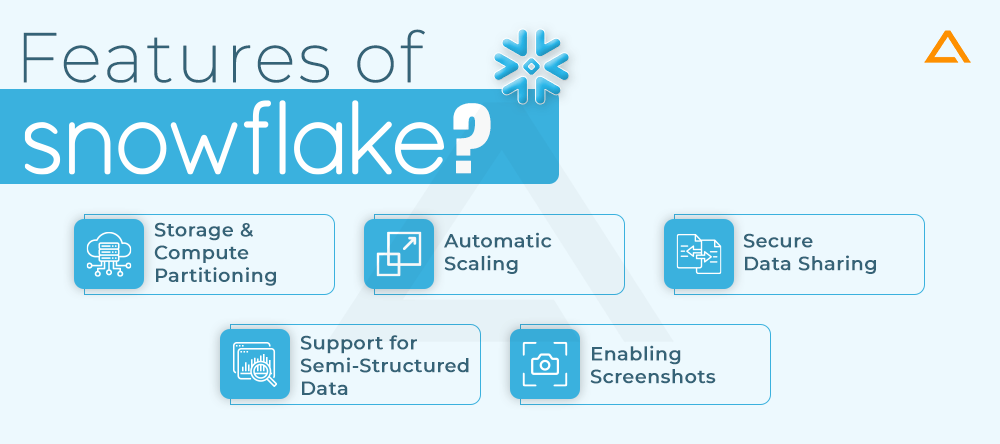
Snowflakes Use cases
Data Warehousing:
- Consolidation & Centralization
- Business Intelligence & Analytics
- Data Sharing & Collaboration
Data Lake Management:
- Storing & Managing Diverse Data
- Data Governance & Security
Additional Use Cases:
- Real-time Analytics
- Machine Learning
- Data Science
Snowflake Vs Databricks: Comparing the Data Cloud Titans
When discussing Databricks versus Snowflake, two prominent players in cloud computing, it’s essential to understand these distinctions in order to meet their data processing and analytics requirements. Here is the tabular comparison for Snowflake vs Data Bricks.
| Factors | Data Bricks | Snowflake |
| Founded Year | 2013 | 2012 |
| Service Model | PaaS | SaaS |
| Who is it used | Data Analysts, data engineers, data scientists | Data Analysts |
| Major Cloud Platform Support | Azure, AWS, Google | Azure, AWS, Google |
| Migration to Platform | Complex as it is a data lake | Easy as it’s a data warehouse |
| Scalability | Auto-scaling | Auto-scaling up to 128 nodes |
| Vendor Lock-In | No | Yes |
| User-Friendliness | Learning Curve | Easy to adopt |
| Data Structure | All data types | Semi-structured or Structured data |
| Cost | Pay by usage | Pay by usage |
| Ease of Use | More complex setup and management | Easier setup and management |
| Data Science & Machine Learning | Built-in Support for data science & machine learning | Requires additional tools for data science and machine learning |

Looking for Data Engineering Service? 👀🌟
Revolutionize Your Data Infrastructure with Cutting-Edge Engineering Services from Aglowid IT Solutions!
Let’s understand the differences in the detail for databrick vs snowflake.
Databricks vs Snowflake: Head-to-Head Detailed Comparison
Navigating the cloud data landscape can be challenging. This comparison breaks down Databricks and Snowflake, highlighting their unique strengths in architecture, performance, ecosystem integration, and security. Understanding these key differences will help you choose the platform that best suits your data needs. Let’s start with the architecture:
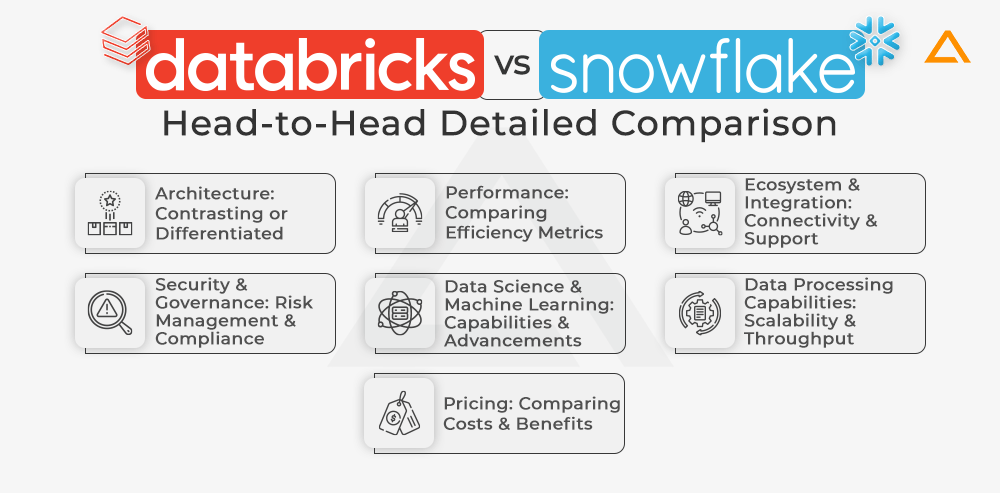
Snowflake vs Databricks: Architecture
Choosing between Databricks and Snowflake depends on your data needs. Databricks offers integrated data lake building with tools like Spark and Delta Lakes, providing flexibility but requiring a steeper learning curve for setup and implementation.
In contrast, Snowflake separates storage and computing, focusing on structured data with an easy-to-use, cloud-based system. While it is simple to configure, it lacks flexibility in data handling
Databricks vs Snowflake: Performance
Databricks excels at real-time execution of complex workloads with Apache Spark, making it ideal for large projects. Performance can vary based on cluster configuration and resource allocation. However, Databricks delivers fast, predictable query performance for datasets, ensuring consistent results for analysis jobs.
Snowflake vs Databricks: Ecosystem & Integration
Databricks excels at running complex real-time projects with Apache Spark, making it ideal for large-scale tasks. Performance can vary based on cluster configuration and resource allocation. Snowflake, with its automatic scaling, offers quick and predictable queries for structured data, ensuring consistent performance for analytics services. Unlike Databricks, which provides flexibility, Snowflake delivers reliable performance with its scalable architecture.
Database vs Snowflake: Security & Governance
Although Databricks offers robust security features such as multi-level access control, it requires proper configuration and ongoing deployment to achieve optimal security. Snowflake, on the other hand, boasts built-in security with granular access control and data governance features such as data lineage tracking and audit logs This makes it easier to apply robust security in Snowflake compared to Databricks, it requires a lot of hand manipulation.
Snowflake vs Database: Data Science & Machine Learning
Databricks are key for data science and machine learning. Its integrated data lake home handles data structures with ease and integrates with popular libraries such as Spark and ML Flow to provide robust modeling and pipeline capabilities Although Snowflake uses ML capabilities variety for by Snowpark though excels in flexible data analysis and SQL-based functions. Although integrated with external tools for ML, the process is not much simpler compared to Databricks’ native support.
Thus, Databricks provides a comprehensive and powerful environment for large, complex data science projects requiring advanced analytics. However, Snowflake’s user-friendly interface and intuitive configuration may be desirable for specialised ML applications or those focused on SQL analysis for specialized ML applications or those focused on SQL analysis.
Databricks vs Snowflake: Data Processing Capabilities
Snowflake is a leading data warehouse tool that focuses on high-quality SQL-based solutions. It offers data integration, sophisticated query functions, and features like data sharing, replication, and masking.
Databricks, powered by Apache Spark, provides a wider range of data services beyond SQL, including real-time stream processing, machine learning, and graph processing. It’s popular for AI/ML applications due to its built-in libraries like TensorFlow and MLlib and supports large language models (LLMs) with its fully functional LLM, Dolly
Snowflake vs Databricks: Pricing
Pricing can be tricky to compare since Databricks and Snowflake have different models. Databricks is often more cost-effective due to its flexible pricing structure, which suits various sizes and budgets. It uses a pay-as-you-go model, so you only pay for what you use. Features like auto-scaling and auto-termination help manage costs by adjusting resources automatically.
In contrast, Snowflake has a fixed pricing model based on pre-allocated resources, which can lead to over-provisioning and higher costs. Databricks’ variable pricing and efficient ETL/ELT performance make it a more cost-effective choice compared to Snowflake.
Now that you understand the key differences between Databricks and Snowflake, let’s explore whether they are competitors or complementary platforms.
Snowflakes vs Databricks: Competitors or Allies?
Snowflakes and Databricks are not directly competitors in the cloud platform industry. These two-cloud data platforms are complementary and can be allies in the data-driven ecosystem. Here are the reasons why:

Different Strengths of Databricks vs Snowflakes
- Databricks: Excels in superior analytics, statistics engineering, and gadget learning. It gives a unified data lake house architecture, managing numerous records formats and permitting to build a complex data pipelines and version building.
- Snowflake: This company focuses on cloud data warehousing, business intelligence, and SQL-based total analytics. It shines with its user-pleasant interface, computerized scaling, and optimized overall performance for established facts.
Potential Collaboration of Databricks and Snowflakes
- Data Processing and Analysis: Databricks can handle complex statistics processing tasks and assemble data for Snowflake evaluation.
- Advanced Analytics and Machine Learning: Data technology teams can leverage Databricks for superior analytics and ML, while BI groups use Snowflake for facts exploration and reporting.
- Unified Data Strategy: Combining each structures creates comprehensive records surroundings, taking into account diverse data dealing with, evaluation, and insights generation.
Navigating Potential Challenges: Snowflakes vs Databricks
- Integration: While both offer integrations, seamless collaboration may require additional effort and configuration.
- Cost Considerations: The blended value of both structures can be better as compared to the use of a single answer.
- Complexity: Implementing and managing a multi-platform surroundings may be greater complex than the use of an unmarried platform.
Wrapping Up!
Databricks and Snowflake are complementary platforms that serve different data needs. Databricks excels in advanced analytics, data engineering, and machine learning, offering a flexible environment for complex data pipelines and model building. Snowflake shines in user-friendly data warehousing and business intelligence, providing a streamlined solution for analyzing and reporting on structured data.
Choosing the right platform depends on your priorities. If you need in-depth data analysis, advanced manipulation, and machine learning, Databricks is the best choice. For a scalable, user-friendly data warehousing and BI solution, Snowflake is ideal.
A hybrid approach can be highly beneficial. Databricks can manage complex data processing and prepare data for analysis, while Snowflake can serve as the high-performance data warehouse for structured data analysis and reporting. This combination leverages the strengths of both platforms, creating a comprehensive and flexible data ecosystem.
